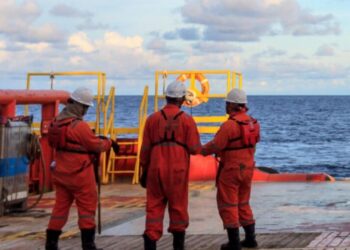ABS has published guidance on use of a power reserve for overridable propulsion management systems, writes Fei-Yao Li, ABS Senior Principal Surveyor.
In Resolution MEPC.335(76), 2021 Guidelines on the Shaft/Engine Power Limitation System to Comply with the EEXI requirements and Use of a Power Reserve (the “Guidelines”), the IMO defines measures to limit the propulsion power to be considered in the EEXI calculation.
The 2021 Guidelines also define the two different power limitation methods: Engine Power Limitation (EPL) and Shaft Power Limitation (SHaPoLi). EPL limits engine power by restricting the fuel rack (mechanically controlled engines) or the fuel index (electronically controlled engines) and may also directly limit the power in the engine’s control system. SHaPoLi measures the shaft power with an independent torque meter and the limitation is based on this value.
Onboard management
According to the IMO Resolution, applied EPL/SHaPoLi and the Onboard Management Manual for all new and existing overridable shaft or engine power limitation systems need to be approved and verified by the flag administration or the recognized organization (RO). The OMM is to include the technical details and identification of key components of the applied EPL/SHaPoLi, service, maintenance and calibration requirements for SHaPoLi, methods of locking and monitoring the EPL, procedures for limiting and releasing the power reserve, time required for un-limiting the power reserve, procedures for notification of the use of power reserve, procedures for survey, etc.
Reporting use
Several U.S. Coast Guard sectors recently issued guidance on the ability to override engine or shaft power limiting devices during pilotage. As per IMO Resolution MEPC.375(80) Amendments to the 2021 Guidelines, the use of a power reserve is only allowed for the purpose of securing the safety of a ship or saving life at sea as below:
- Operating in adverse weather
- Operating in ice-infested waters
- Participation in search and rescue operations
- Avoidance of pirates
- Engine maintenance
- Description of other reasons consistent with regulation 3.1 of MARPOL Annex VI.
If the power reserve has been used, the ship should without delay notify its administration or RO responsible for issuing the relevant certificate, as well as the competent authority of the relevant port of destination.
The information provided should be accompanied by supporting evidence (e.g. weather condition reports) and records from the SHaPoLi/EPL system during the use of the power reserve for verification by an flag administration or RO. The above information must also be recorded on the record page of the OMM for SHaPoLi/EPL, signed by the master and kept on board. On an annual basis, by 30 June, the flag administration should report to the IMO Secretariat uses of a power reserve over a 12-month period from 1 January to 31 December for the preceding calendar year, using the format as set out in the appendix of IMO Resolution 375(80).
How to record
Where an EPL or SHaPoLi override is activated but the power reserve is not subsequently used, this event should be recorded in the bridge and engine-room logbooks. The engine-room logbook should record power used during the period when the override was activated.
The EPL/SHaPoLi should be reset as soon as possible, and details of the reset should also be recorded in the bridge and engine-room logbooks. The flag administration or RO should confirm reactivation of the EPL or SHaPoLi following the same procedure as when the power reserve is used.
How to report
In case power reserve has been used or reactivated, an occasional survey/audit shall be carried out. This occasional survey/audit may be carried out by remote methods. There might be transitory periods and isolated spikes in the recorded output such as fluctuation of load due to weather and sea conditions.
This short transitory exceedance of the power limit should not be considered as a ‘reserve power used’ which should be reported to the flag administration and subsequently to the IMO. The acceptable exceedance period varies between flag administrations and operators should confirm the allowable exceedance period with their flag.
The views presented hereabove are only those of the author and do not necessarily reflect those of SAFETY4SEA and are for information sharing and discussion purposes only.



































































